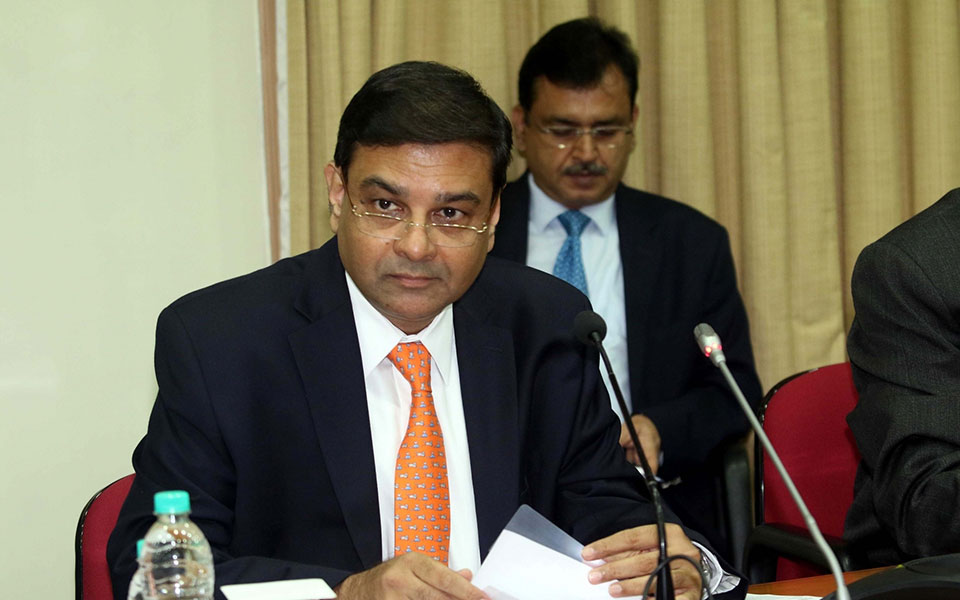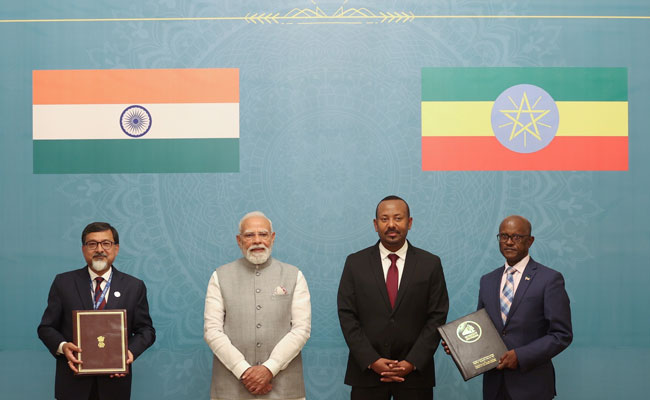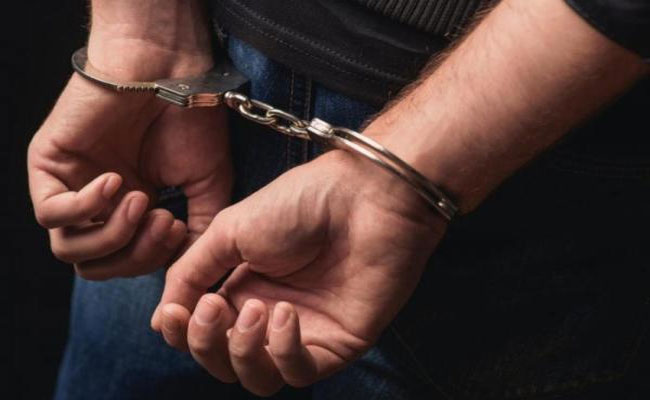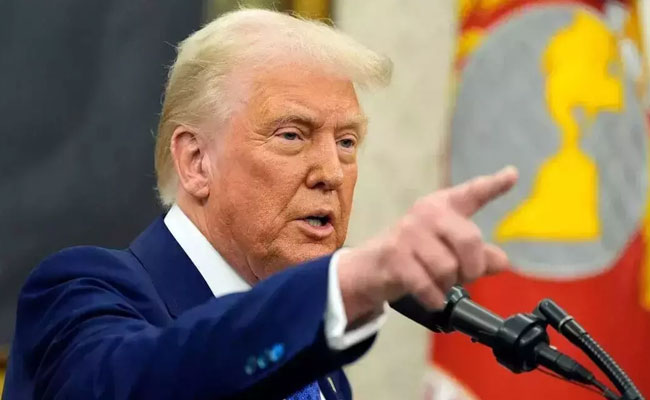Mumbai, June 6: Housing loan and auto loan will become dearer with the Reserve Bank of India (RBI) on Wednesday raising its key interest rate for the first time since January 2015.
The country's central bank -- RBI -- has raised repo rate by 25 basis points (bps) to 6.25 per cent, responding to concerns on inflation from surging global crude oil prices.
The RBI, however, maintained its 'neutral' stance on policy, as it has done over four previous bi-monthly policy reviews when it held the repo, or its short term lending rate for commercial banks, at 6 per cent. This stance allows the RBI to move either way on rates.
"The decision of the Monetary Policy Committee (MPC) is consistent with the neutral stance of monetary policy in consonance with the objective of achieving the medium-term target for consumer price index (CPI) inflation of 4 per cent within a band of +/- 2 per cent," the RBI statement said.
"Consequently, the reverse repo rate under the liquidity adjustment facility (LAF) stands adjusted to 6.0 per cent, and the marginal standing facility (MSF) rate and the Bank Rate to 6.50 per cent."
Addressing the media following the policy announcement, RBI Governor Urjit Patel elaborated that the neutral stance allowed various options to the central bank and was not in contradiction to raising rates.
"The neutral stance leaves all options open... other central banks do the same, there is no contradiction here," he said in response to a query.
"We have kept the neutral stance as well as responded to the risks to inflation visible in recent months. Inflation has remained over the target level of 4 per cent for over six months," he added.
The six-member MPC voted unanimously for the rate hike that the central bank was undertaking after more than four years and comes for the first time under the Prime Minister Narendra Modi-led government.
The government was quick to laud the latest monetary policy review.
"Welcome monetary policy statement. Quite balanced assessment of growth, inflation and external situation and expectations. Rate hike understandable considering existing interest differentials and oil price movement. Should help in removing uncertainties and steadying markets," Economic Affairs Secretary S.C. Garg said in a tweet.
The RBI also revised upwards the retail inflation range to 4.8-4.9 per cent in the first half of 2018-19, and to 4.7 per cent in the second half, including the impact of house rent allowance (HRA) for central employees, and with risks on the upside.
"The April-May prints show that inflation, excluding food and fuel has hardened. Higher oil prices and input costs have added to the upside risks," RBI Deputy Governor Viral Acharya said.
"On the other hand, growth indicators show that economic revival is on sound footing. Given the inflation target of 4 per cent, it seemed the right time for the MPC to consider a hike of 25 basis points," he added.
The country's retail inflation rose to 4.58 per cent in April from a rise of 4.28 per cent in March and 2.99 per cent in the corresponding period of the previous year.
The fourth quarter estimate of Gross Domestic Product (GDP) released by the Central Statistics Office last month estimated the growth rate at 7.7 per cent, as against 5.6 per cent, 6.3 per cent and 7 per cent respectively in the first three quarters.
Recent crude oil price volatility imparts considerable uncertainty to the inflation outlook, the RBI said.
"Since the MPC meeting in early April, the price of the Indian basket of crude surged from $66 a barrel to $74. This, along with an increase in other global commodity prices and recent global financial market developments, has resulted in a firming up of input cost pressures," the statement said.
To arrive at this decision, the MPC extended its deliberations this time by an extra day.
Commenting on the development, Deloitte India Partner Anis Chakravarty said in a statement: "The RBI was cautious on the factors that could change the course of the underlying optimism, major among them being the projections on oil price movement and rising geopolitical tensions.
"However, given that the committee has maintained a neutral stance, there remains room for manoeuvrability in policy perspective should incoming data show sharp fluctuations."
Arihant Capital Markets Director Anita Gandhi said: "Recent hike in crude prices and better GDP for last quarter of FY 18 suggest inflation trajectory may be on the higher side. Though this may put some pressure on borrowers, it is positive news for the savers in the economy."
Let the Truth be known. If you read VB and like VB, please be a VB Supporter and Help us deliver the Truth to one and all.
Addis Ababa (PTI): India and Ethiopia on Tuesday elevated their historical ties to a strategic partnership, as Prime Minister Narendra Modi held wide-ranging talks with his Ethiopian counterpart Abiy Ahmed Ali during which they discussed issues of bilateral and mutual interest.
Modi, who arrived here from Jordan on his maiden bilateral visit, was accorded a ceremonial welcome at the National Palace ahead of the bilateral talks, reflecting the vibrant India-Ethiopia relations rooted in shared history and a promising future.
"We are elevating India and Ethiopia relations to a strategic partnership. This step will provide new energy, new momentum and new depth to our ties," Prime Minister Modi said during the delegation-level talks.
He thanked PM Ali for his support in India's fight against terrorism. "The support of friendly countries in this struggle against terrorism holds great significance," Modi said.
"Today, we got the opportunity to deliberate on the key aspects of our cooperation, such as economy, innovation, technology, defence, health, capacity-building and multilateral cooperation. I am pleased that today, we have decided to double the student scholarship for Ethiopia in India," Modi said.
Modi said that India and Ethiopia have shared contact, dialogue, and exchange for thousands of years. The two countries, which are rich in languages and traditions, are symbols of unity in diversity, he added.
"Both countries are democratic powers committed to peace and the welfare of humanity. We are co-travellers and partners of the Global South. On international platforms, we have stood shoulder-to-shoulder," he said.
The two sides signed eight MoUs/agreements, including upgrading ties to 'Strategic Partnership', customs cooperation, establishing data center at the Ethiopian Foreign Ministry, UN Peacekeeping training cooperation, debt restructuring under G20, more ICCR scholarships and AI short courses for Ethiopians, and support for maternal and neonatal healthcare.
Modi said the African Union's headquarters in Ethiopia makes the country a meeting point of African diplomacy. "Inspired by the common vision of an inclusive world, in 2023, India ensured that the African Union became a G20 member," he said.
In 2023, during India’s G20 Presidency, the African Union was admitted as a permanent member of the G20.
Modi said that though this is his first visit, he felt a deep sense of belonging and warmth, reflecting the thousands of years of connection between the two countries.
On his part, Prime Minister Ali said the two countries share over thousands of years of connection through trade, diplomacy, education, culture and even in our food and traditions. "These ties continue to shape a deep friendship, collaboration and mutual respect between our people," he said.
"We also appreciate your consistent message that Africa's priorities must lead the partnership. These kinds of dignified, respectful messages for Africa are very important. Mr Prime Minister, keep pushing. That is the type of message we are expecting from all our trusted friends," Ali said.
He said this aligned fully with Ethiopia's development plan - African-owned, African-led, and African-defined.
"Today, we meet with a clear focus to shape a modern partnership, grounded in sovereignty, self-reliance and practical cooperation. Our cooperation is rooted in equality and South-South solidarity," he said.
"Our economy is performing strongly. Last year, we grew 9.2% and this year we are expecting 10.3% GDP growth. Besides GDP growth, our FDI inflow is also rising big time. India is the leading source for our FDI," he said.
"We have more than 615 Indian companies which are investing in Ethiopia. This all gives our cooperation a strong foundation of trust. I think our decision today that we elevate our historic relationship to a strategic relationship is the right decision," he added.
Ethiopia also conferred its highest award - The Great Honour Nishan of Ethiopia - on PM Modi. He is the first global head of state to receive this award.
Prime Minister Modi also went to the Friendship Park and Friendship Square in Addis Ababa with PM Ali.
In a warm and special gesture, PM Modi was earlier received by his Ethiopian counterpart at the airport and accorded a warm and colourful welcome.
"Ethiopia is a nation with great history and vibrant culture," Modi said.
PM Ali informed his Indian counterpart about the varieties of Ethiopian coffee during informal talks.
"At Addis Ababa airport, took part in a traditional Coffee Ceremony with Prime Minister Abiy Ahmed Ali. The ceremony beautifully highlights Ethiopia’s rich heritage," Modi said.
In a unique gesture, the Ethiopian Prime Minister drove Modi to the hotel.
On the way, he took a special initiative of taking PM Modi to the Science Museum and Friendship Park, which was not in the itinerary.
"Gratitude to Prime Minister Abiy Ahmed Ali for showing me glimpses of Ethiopian history and culture at the National Palace Museum in Addis Ababa. It was a powerful reminder of Ethiopia’s rich traditions," Modi said in a post on X.
The Nobel Peace Prize-winning Ethiopian PM’s special gestures show remarkable respect for Modi, sources said.
"Thank you Ethiopia for a welcome that was unforgettable. The Indian community showed remarkable warmth and affection. India-Ethiopia friendship is going to get even more robust in the times to come," Modi said.
When Modi arrived at the hotel, he was warmly welcomed by the members of the Indian community. Local artists performed dances. Some of them danced on the theme of the popular Hindi song 'Aisa Des Hai Mera' to welcome him.
On Wednesday, Modi will address the Joint Session of Parliament and share his thoughts on India's journey as the "Mother of Democracy" and the value that the India-Ethiopia partnership can bring to the Global South.
PM Modi arrived in Ethiopia from Jordan, where he held a one-on-one meeting with King Abdullah II at the Husseiniya Palace on Monday before the delegation-level talks.
India and Jordan also inked MoUs in the fields of culture, renewable energy, water management, digital public infrastructure and twinning arrangement between Petra and Ellora, aimed at giving a major boost to bilateral ties and friendship.
From Ethiopia, Modi will visit Oman on the final leg of this three-nation tour.





